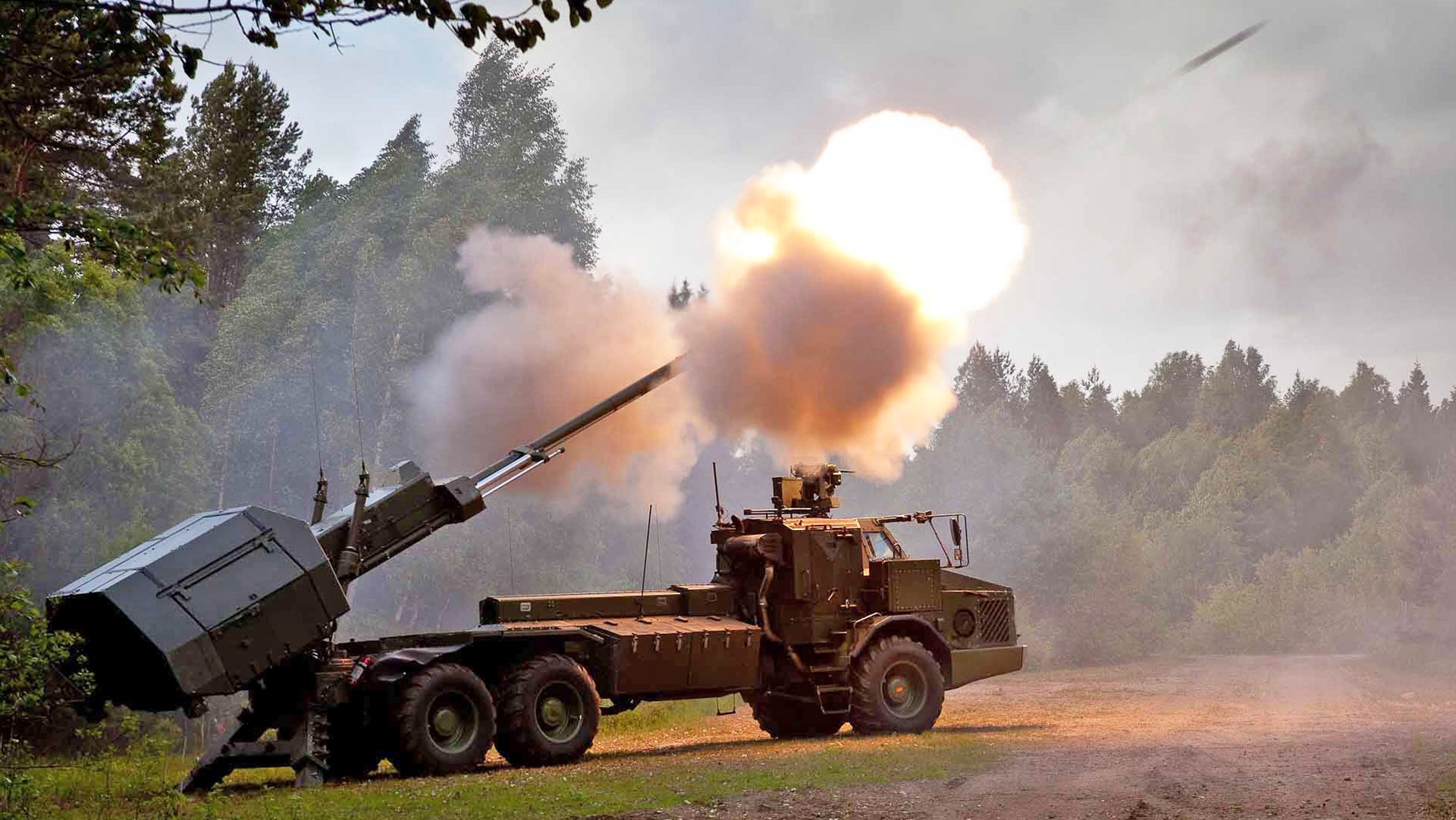Self-propelled howitzer designs from Israel, Serbia, and Sweden, as well as American models, will take part in a U.S. Army shoot-off at Yuma Proving Ground in Arizona early next year. The service is looking for new mobile artillery piece for its brigades equipped with Stryker wheeled armored vehicles, which are presently equipped with towed 155mm M777 howitzers.
Israel’s Elbit Systems, Serbia’s Yugoimport, and U.K.-headquartered defense giant BAE System’s Bofors division in Sweden have all confirmed that they will be taking part in the event. American automotive company AM General, in cooperation with Mandus Group, will also be participating.
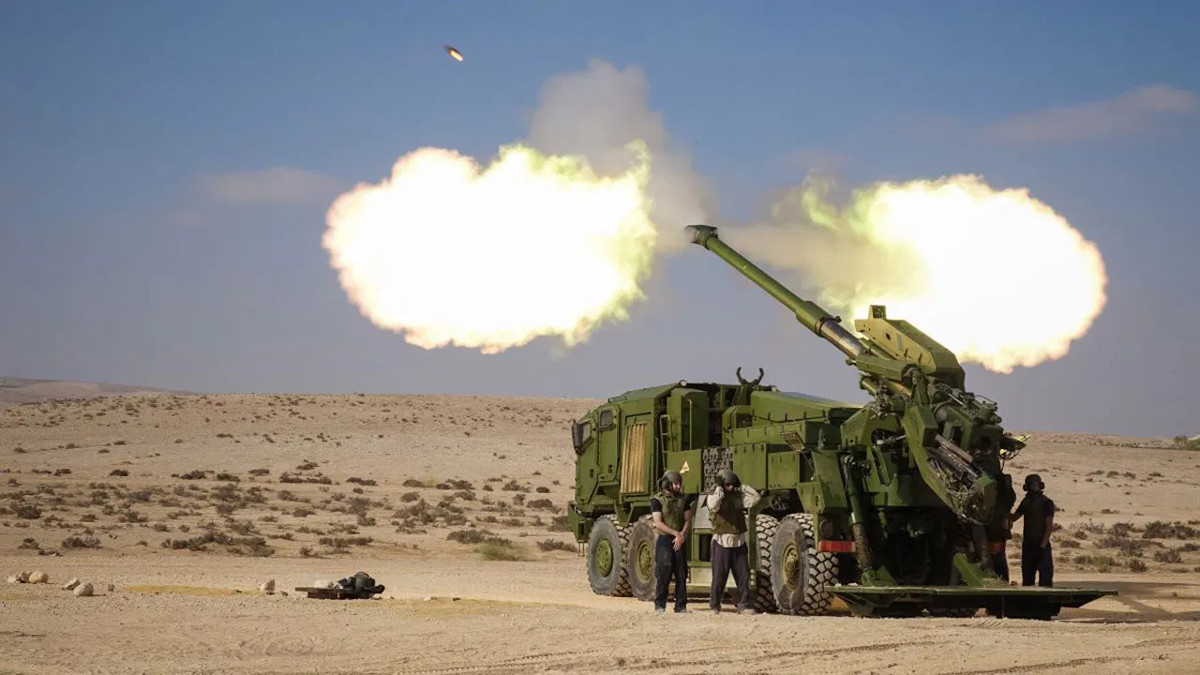
The Army had first announced in July that it was looking for new self-propelled howitzers for its Stryker brigades, expressing interest only in designs that were at least mature enough to go into serial production, if they weren’t already. The service is also looking for increased range, rate of fire, and mobility over the existing M777s.

Elbit has submitted the latest iteration of its Autonomous Truck Mounted howitzer System (ATMOS), also known as Iron Sabre, which is a truck-mounted 155mm howitzer with a 52 caliber barrel. In artillery parlance, caliber is a measurement of length in relation to the diameter of the barrel. As such, a 52 caliber 155mm barrel is just under 26 and a half feet long. The M777, by comparison, has a 39 caliber 155mm barrel, which is just around 16.7 feet long. In general, longer barrels on howitzers translate to greater range.
Soltam Systems, now a division of Elbit, first began developing ATMOS in the late 1990s. The “autonomous” in its name is more a reflection of its heavily automated nature, rather than its ability to operate completely independently of human control. It is worth noting that Soltam and Elbit have also talked about adding some kind of actual autonomous or at least semi-autonomous capability to the system in the past.

The current Iron Sabre version does have an integrated computerized fire control system for automatically aiming the gun at a desired set of coordinates and firing it, though manual backups are provided, as well. It can be fitted with what Elbit describes as an automatic loader, which allows the crew to simply place shells and propellant charges on a tray, which are then rammed into the barrel without the need for a human loader.
Using this combination of features, Elbit has demonstrated, as seen in the video below, the ability of a four-man crew to set up an ATMOS Iron Sabre howitzer and fire the first round at the designated target within 30 seconds. An additional five rounds can be fired at that same target and then the crew can pack the vehicle back up to move out to another position all in around 110 seconds in total. This kind of shoot-and-scoot capability makes the system more flexible and also reduces its vulnerability to enemy counter-attacks.

A simplified loading system wherein an individual positions shells and propellant charges in line with the barrel, but a mechanical system actually loads them in, is also available for ATMOS. Elbit has also been testing a more fully automated system for its related Autonomous Towed Howitzer System (ATHOS), which loads shells automatically from a tray holding three rounds, though a human operator still has to place propellant charges on the loading tray.

It’s not clear what kind of truck Elbit will mount the ATMOS on for the Army. The company has said that the howitzer system is adaptable to various in-production 8×8 and 6×6 chassis, including that of the American-made 8×8 Heavy Expanded Mobility Tactical Truck (HEMTT) series.
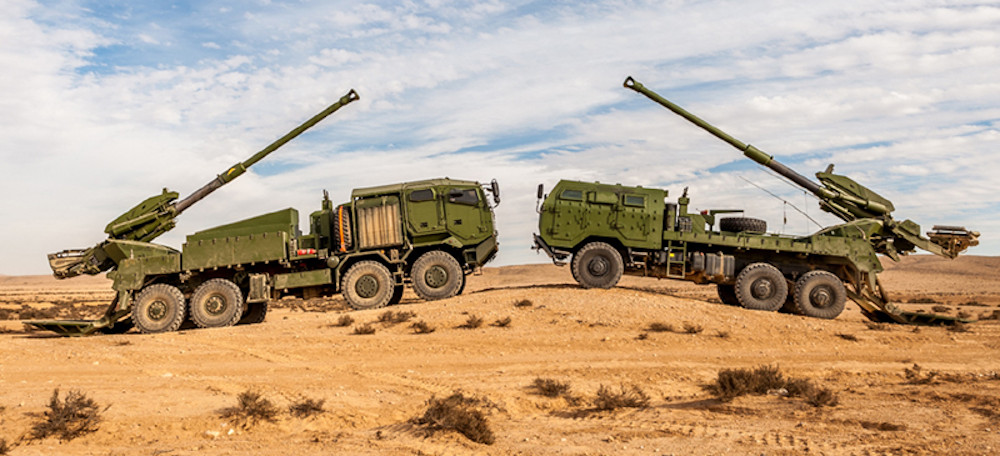
BAE Systems Bofor’s is offering the Archer, another truck-mounted 52 caliber 155mm howitzer. This weapon, which was also developed in the late 1990s, most notably features a true auto-loader that feeds shells into the gun from a 21-round magazine. It also has a separate magazine loaded with modular propellant charges.

A computerized fire control system allows the crew, which can be as small as two people, to set the desired amount of propellant and then fire the gun at the desired target. The crew can emplace the howitzer in just 14 seconds, without having to exit the protection of its armored cab, which also features a remote weapon station for localized self-defense, and fire the first round in 23 seconds. The system can lob four shells at the same target and be on the move again in 74 seconds. This is so fast that, depending on how far the rounds fly, some of them may not have even struck before the vehicle drives away from its firing position.

To date, Archer is only in Swedish Army service mounted on a heavily modified 6×6 Volvo A30D articulated dump truck chassis. It’s not clear if the howitzer that BAE Systems Bofors will send to next year’s shoot-off will use this chassis, though it seems unlikely that the Army would be interested in adopting it, regardless. BAE Systems did unveil a version of the Archer system mounted on an 8×8 MAN truck chassis in 2019, suggesting that it can be further adapted to other types to meet customer requirements.
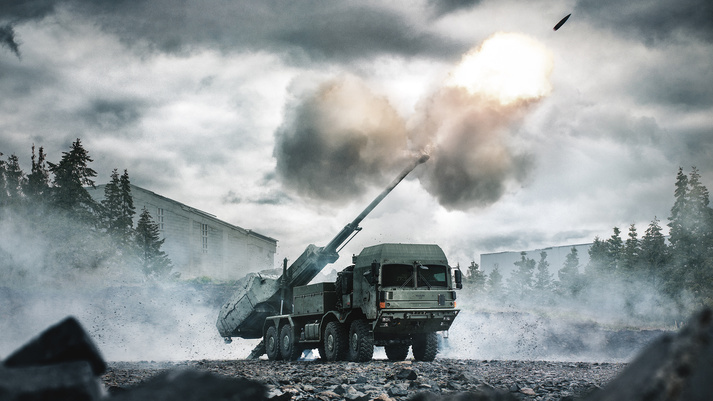
Serbia’s Yugoimport, via its American partner Global Military Products (GMP), is sending a variant of its Nora B-52 wheeled self-propelled 52 caliber 155mm howitzer. The former Yugoslav republic’s government-owned Military Technical Institute Belgrade began development of this system in the early 2000s.

As is clearly becoming a trend among such weapons, the latest versions of the complete Nora B-52 system include computerized fire control capabilities. It also has an auto-loader with a 12-round magazine, as well as space to store another 24 shells on the truck.
The most recent variant, also known as Aleksander, which was unveiled in 2017, has a completely redesigned turret holding the 155mm howitzer. All of the existing Nora B-52 versions use a modified 8×8 truck chassis from Serbia’s FAP.

AM General and Mandus Group are putting forward Brutus, a low-recoil 155mm howitzer design mounted on an Army standard 6×6 Family of Medium Tactical Trucks (FMTV) chassis. The service has already been experimenting with this weapon, which you can read about in more detail in this past War Zone piece, since at least 2018.
The configuration of Brutus that has been seen so far does not include any kind of automated loading system and does not have a 52 caliber-long barrel. The Army has also explored a low-recoil 105mm howitzer from Mandus Group mounted on a Humvee, known as Hawkeye, in the past.

Despite Brutus’ entry into the shoot-off, foreign designs look set to dominate the event. Though not yet confirmed to be a participant, France’s Nexter has said it is interested in taking part in the shoot-off with the latest iteration of its Caesar design. There are a number of other wheeled self-propelled howitzers on the market made by other U.S. allies and partners, as well.

The lack of American competitors largely stems from the fact that wheeled self-propelled howitzers are something the Army, as well as the U.S. Marine Corps, has historically had little interest in. Heavier tracked self-propelled designs, as well as towed guns, have been standard fare for Army artillery units for decades.
It is worth noting that the Army did test a mobile 105mm howitzer based on the LAV III wheeled armored vehicle chassis, from which the Stryker is also derived. This vehicle was armed with a 105mm Light Experimental Ordnance (LEO) gun from South Africa’s Denel and was not subsequently adopted. Stryker-equipped brigades do have versions of this vehicle armed with 120mm mortars for indirect fire support and there is a separate program underway to replace those variants with a new version fitted with a turreted mortar system, but these weapons do not have the same range or destructive power as a 155mm howitzer.
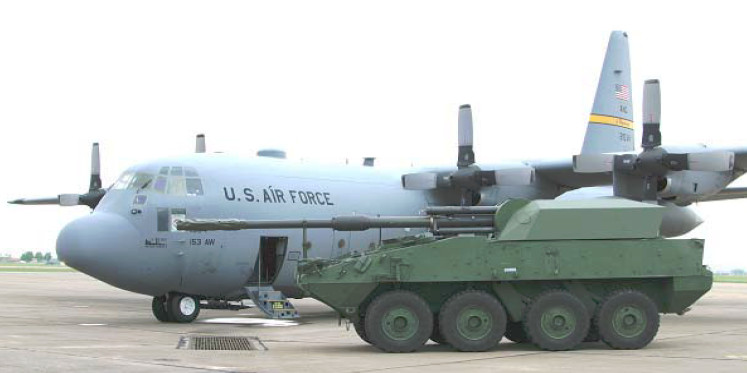
It’s also not clear how the Army’s Extended Range Cannon Artillery (ERCA) program may factor into this effort for the Stryker brigades. ERCA has been focused on developing longer 155mm barrels for existing M777 towed howitzers and derivatives of its M109 tracked self-propelled howitzers, as well as a host of other associated improvements for those weapon systems, and new kinds of ammunition, including ramjet-powered rounds.
Other units may be interested in fielding whatever mobile howitzer design the Army might settle on for its Stryker brigades. In 2018, the service had expressed interest in acquiring a new light-weight, mobile 155mm howitzer that could replace the M777s, as well as 105mm M119s, in Stryker and light infantry brigades.
This kind of wheeled self-propelled howitzer could also appeal to the U.S. Marine Corps. That service is in the process of shuttering a number of M777-equipped artillery units as part of a radical force structure redesign focused on highly mobile distributed operations.
If nothing else, the upcoming shoot-off could finally set the Army down a path to acquiring a self-propelled howitzer better suited to Stryker brigades than existing towed weapons.
Contact the author: joe@thedrive.com
